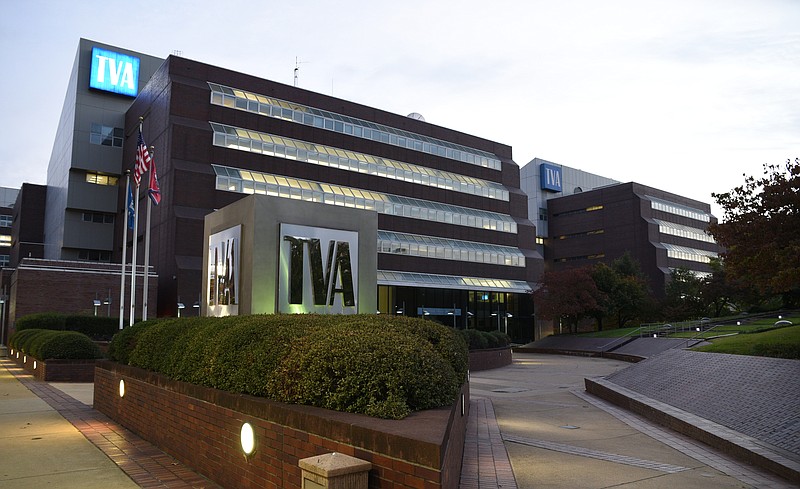After helping to harness the power of the Tennessee River, Appalachia's coal fields and the atom first split in Oak Ridge, the Tennessee Valley Authority is preparing to slow down a bit after 84 years.
In TVA's preliminary budget plan for fiscal 2018 unveiled Tuesday by the Trump White House, TVA projects it will trim its capital spending next year by $677 million, cut its operating expenses by $263 million and trim its staff by another 316 employees compared with the current year.
"We have committed in our spending plan for next year to hold our operations and maintenance spending flat, meaning that we will offset the rate of inflation with productivity gains and other changes," TVA Chief Financial Officer John Thomas said Tuesday. "This will mean we continue to make some staff reductions, but we have already achieved most of these targets."

TVA has cut its staff by more than 2,000 employees over the past three years, reducing its current staff to about 10,300 employees as part of a three-year budget-cutting plan to reduce annual operating expenses by more than $600 million. TVA is exceeding its target of cutting its total debt by $22 billion by 2023, a goal the TVA board adopted three years ago. At the same time, TVA has increased its base rates less than the inflation rate in each of the past three years.
TVA's pension plan remains underfunded by about $6 billion, but Thomas said investment income and fewer employees in the retirement system this year should help to improve the pension's financial standing this year and help TVA meet its long-term goal to restore the pension to full funding.
The completion of America's newest nuclear reactor at Watts Bar Unit 2 near Spring City, Tenn., last fall should save TVA about $100 million a year in fuel expenses in fiscal 2018, Thomas said. Although finishing the second reactor at Watts Bar took longer and cost nearly twice as much as what TVA projected a decade ago, it is still only about half the cost of other new nuclear plants being built in Georgia and South Carolina.
TVA also finished construction of a new combined cycle gas-fired plant at the Paradise fossil fuel plant in Kentucky this spring so capital spending by the federal utility in the next year is projected to drop by more than 26 percent.
"Our large capital projects are winding down," Thomas said.
With power demand relatively stagnant, TVA doesn't plan on building major new base load power plants in the next decade or more.
TVA remains the largest government-owned utility in America with a projected income from operations next year of $892 million on revenues of $10.5 billion, according to the agency's budget filings with the Office of Management and Budget. The TVA board will approve the budget for fiscal 2018 in August.
TVA no longer obtains any taxpayer funding for its non-power programs, which include operating 49 dams and 47 reservoirs in seven Southeastern states.
Unlike previous presidents who have proposed privatizing TVA, the Trump administration made no such proposal for TVA, even though the White House is recommending that the federal government sell off to power transmission marketing agencies, including the Southwestern Power Administration, the Western Area Power Administration and the Bonneville Power Administration.
"We have been working to improve the efficiency of our operations to hold down our costs, and I think we're in pretty good shape," TVA President Bill Johnson told industry analysts last month after reporting improved earnings again this year.
Contact Dave Flessner at dflessner@timesfreepress.com or at 423-757-6340.
